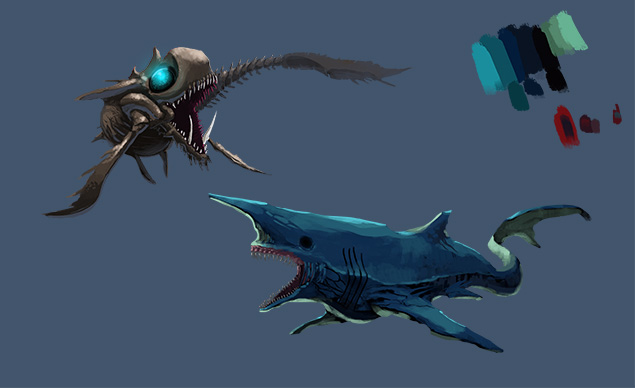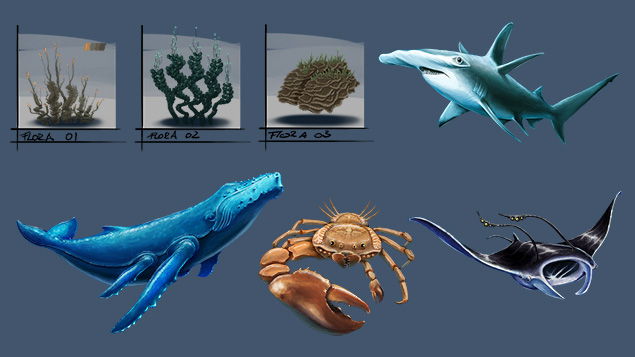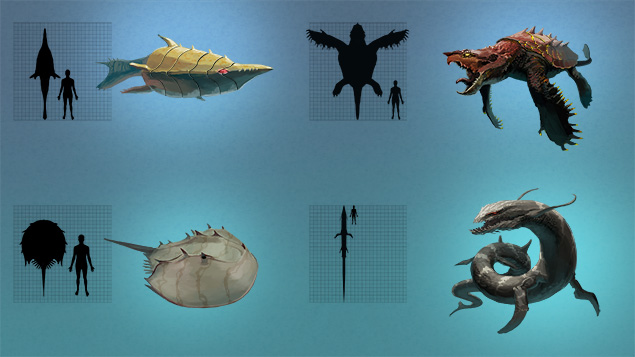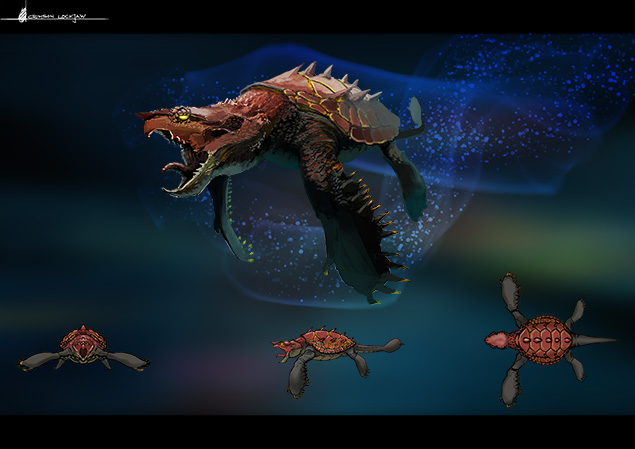In one of the previous posts we were on the track of our unit design philosophies. We were writing very deep, philosophical things. But above all, it was theoretical and abstract. This time, we’d like to continue with our unit creation pipeline and give you an idea about our PRACTICAL workflow.
First step: Getting the idea
Maybe you have already read the first steps on unit creation. (You did not? Then go check it out here, here or here. I'll wait.) In a nutshell: We check out, which roles and functionalities are missing and create ideas for that. Additionally, we define gameplay goals for the new unit: How shall it feel? How will it be played? Which are the interesting situations, the strengths and weaknesses?
Second step: The idea becomes a design
The second step of our unit’s journey is led by our ambitious concept team, consisting of a game designer and an artist. They convert an abstract idea to a yet theoretic design concept. Always keeping a close eye on the prior defined goals of the unit, a list of possible functionalities is crafted and discussed. In this early step, the first rough art concepts are created. Mostly with a pen and paper, just to get an idea of possibilities.

After intense arguments and bloody fights, we finally settle for the best fitting unit functionality. We like to refer to this process as the “survival of the fittest idea”.
Leaving some of our honorable team members for dead, the survivors continue to craft a unit design sheet. This sheet contains all information we’ll ever need for the development process: Attack type, value focusses, size of the unit, roles, references, visual descriptions, animation lists, sound lists, ability functionalities … The list is endless.
The climax of the second step is the team kickoff: The concept team presents its work to the rest of the team to track down the last questions.
Third step: Giving life to the design
Once the unit definition is clarified in every aspect, our art pipeline starts converting the unit design sheet to truly breathtaking creations.
Starting with a couple of concept ideas…


… and undergoing another round of the “survival of the fittest idea”, we then settle for the best-fitting and most awesome visualization. This phase of unit creation is always emotionally charged. After all, we have to decide which visualization FITS the purpose, LOOKS awesome and TRANSPORTS our vision of that unit. Besides, it’s never easy to say no to the other concepts, which are never bad – but maybe just not fitting so well.
Once we decided for one of the concepts, it’s time to iterate over it. Adjust parts, get into every detail and make everything work together. When the responsible artist and game designer are satisfied, preparations for the next development phase begin: We create side views and a beauty concept to communicate the vision of the unit to the 3D artist. In addition, animation and effect storyboards are crafted to make work easier for the Animation and Effect artist.
And that’s the final outcome of the unit design workflow:

We hope you enjoyed the trip through unit design workflow. After this, the results are used as input for the 3D workflow, which is – you probably guessed it – part of the upcoming newsposts. So stay tuned for some awesome videos where we show you the making of our turtle and give you some insights into 3D modeling.
TL; DR
For all of you who mindfully will read the post (I’m pretty sure you will?), but would like to sneak down to check out the results first. Here’s the summary of our unit design workflow:
- Design something to look busy
- Add explosions
- Add more explosions
Seriously, no time to waste:



Thanks for reading. Get your very own always hungry turtle in our wallpaper section.





"Add explosions
Add more explosions"
#MichaelBayApproved :D
I meant to +1 this but on accident pressed the -. It was funny. =)
No worries, I gave you the +1 instead ;-)